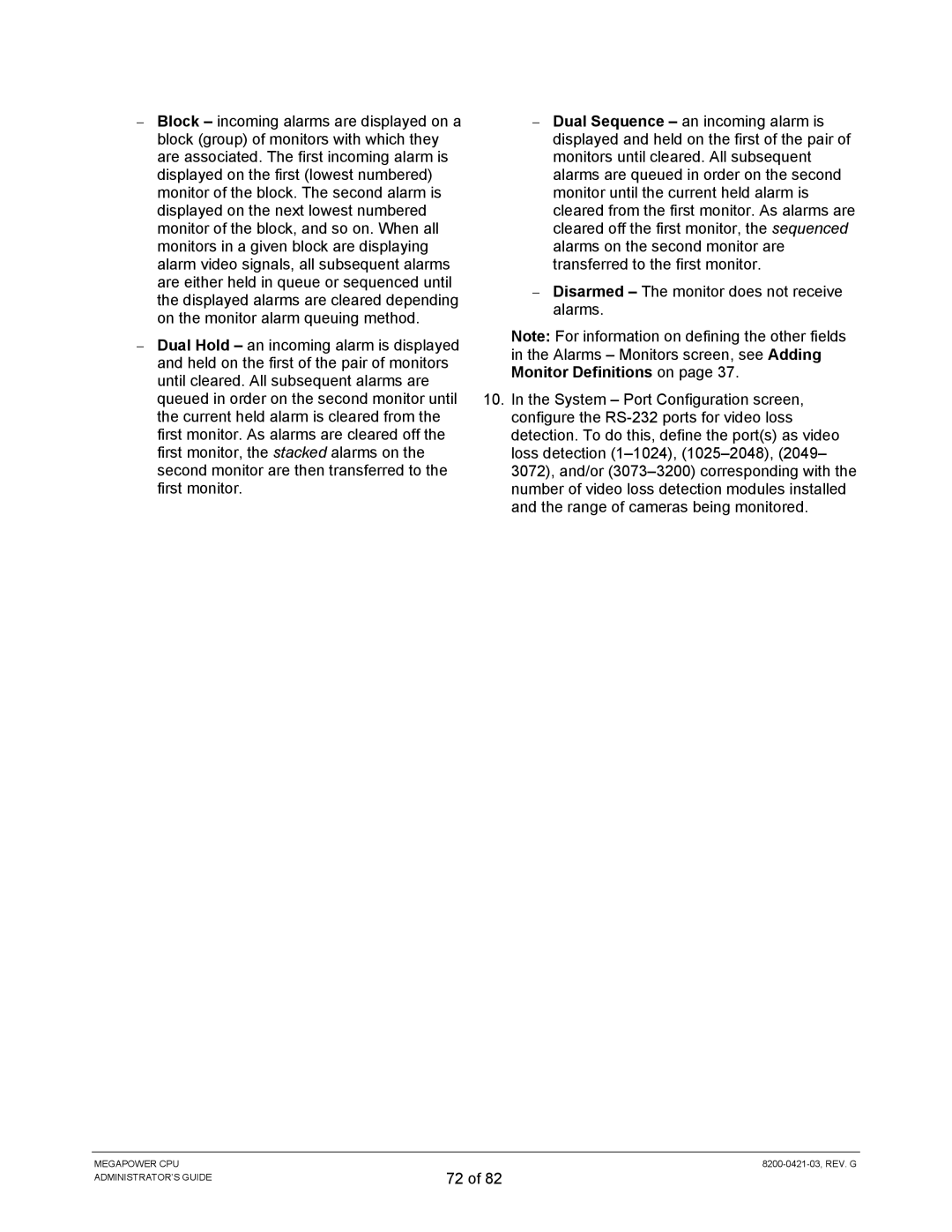−Block – incoming alarms are displayed on a block (group) of monitors with which they are associated. The first incoming alarm is displayed on the first (lowest numbered) monitor of the block. The second alarm is displayed on the next lowest numbered monitor of the block, and so on. When all monitors in a given block are displaying alarm video signals, all subsequent alarms are either held in queue or sequenced until the displayed alarms are cleared depending on the monitor alarm queuing method.
−Dual Hold – an incoming alarm is displayed and held on the first of the pair of monitors until cleared. All subsequent alarms are queued in order on the second monitor until the current held alarm is cleared from the first monitor. As alarms are cleared off the first monitor, the stacked alarms on the second monitor are then transferred to the first monitor.
−Dual Sequence – an incoming alarm is displayed and held on the first of the pair of monitors until cleared. All subsequent alarms are queued in order on the second monitor until the current held alarm is cleared from the first monitor. As alarms are cleared off the first monitor, the sequenced alarms on the second monitor are transferred to the first monitor.
−Disarmed – The monitor does not receive alarms.
Note: For information on defining the other fields in the Alarms – Monitors screen, see Adding Monitor Definitions on page 37.
10.In the System – Port Configuration screen, configure the
MEGAPOWER CPU ADMINISTRATOR’S GUIDE
72 of 82
